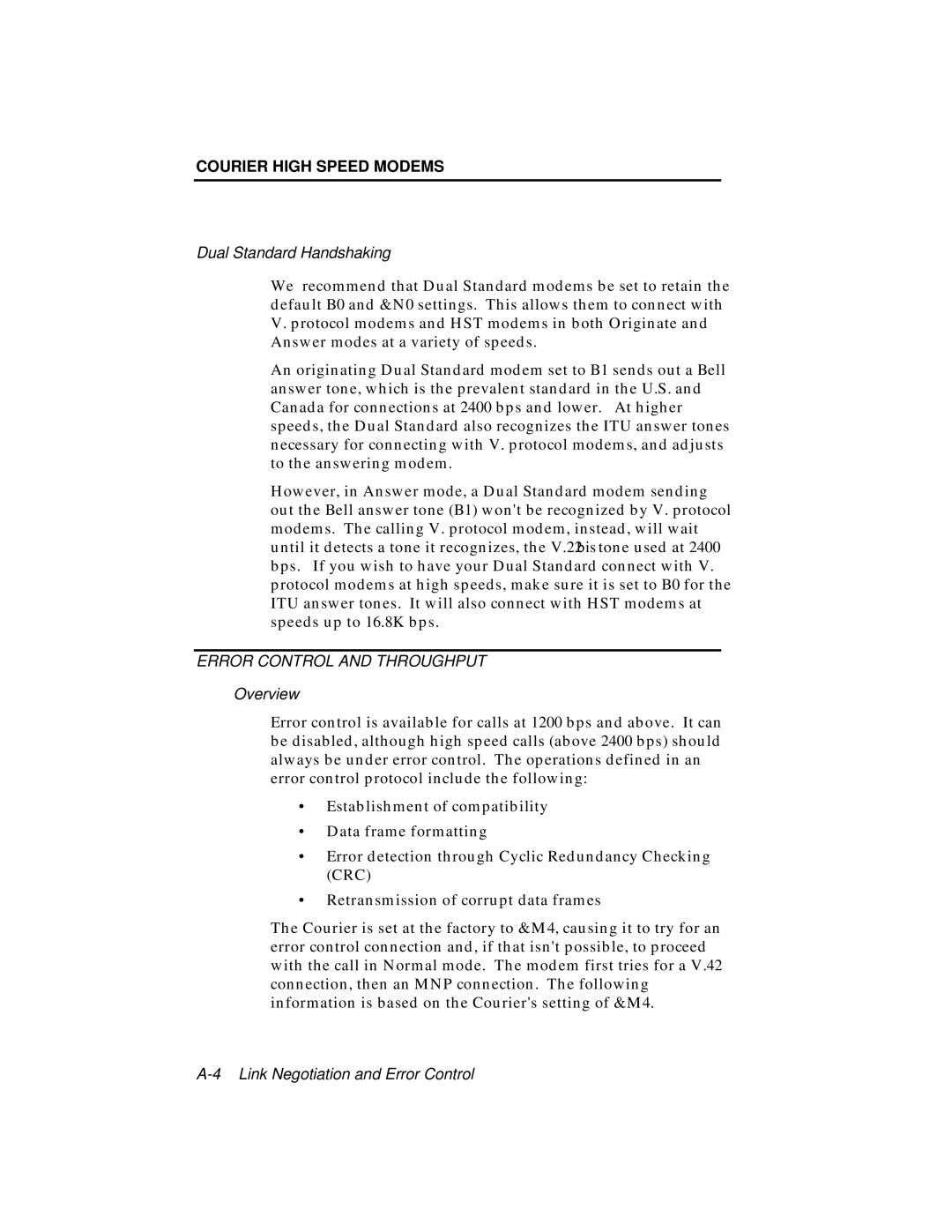
COURIER HIGH SPEED MODEMS
Dual Standard Handshaking
We recommend that Dual Standard modems be set to retain the default B0 and &N0 settings. This allows them to connect with V. protocol modems and HST modems in both Originate and Answer modes at a variety of speeds.
An originating Dual Standard modem set to B1 sends out a Bell answer tone, which is the prevalent standard in the U.S. and Canada for connections at 2400 bps and lower. At higher speeds, the Dual Standard also recognizes the ITU answer tones necessary for connecting with V. protocol modems, and adjusts to the answering modem.
However, in Answer mode, a Dual Standard modem sending out the Bell answer tone (B1) won't be recognized by V. protocol modems. The calling V. protocol modem, instead, will wait until it detects a tone it recognizes, the V.22 bis tone used at 2400 bps. If you wish to have your Dual Standard connect with V. protocol modems at high speeds, make sure it is set to B0 for the ITU answer tones. It will also connect with HST modems at speeds up to 16.8K bps.
ERROR CONTROL AND THROUGHPUT
Overview
Error control is available for calls at 1200 bps and above. It can be disabled, although high speed calls (above 2400 bps) should always be under error control. The operations defined in an error control protocol include the following:
•Establishment of compatibility
•Data frame formatting
•Error detection through Cyclic Redundancy Checking (CRC)
•Retransmission of corrupt data frames
The Courier is set at the factory to &M4, causing it to try for an error control connection and, if that isn't possible, to proceed with the call in Normal mode. The modem first tries for a V.42 connection, then an MNP connection. The following information is based on the Courier's setting of &M4.
